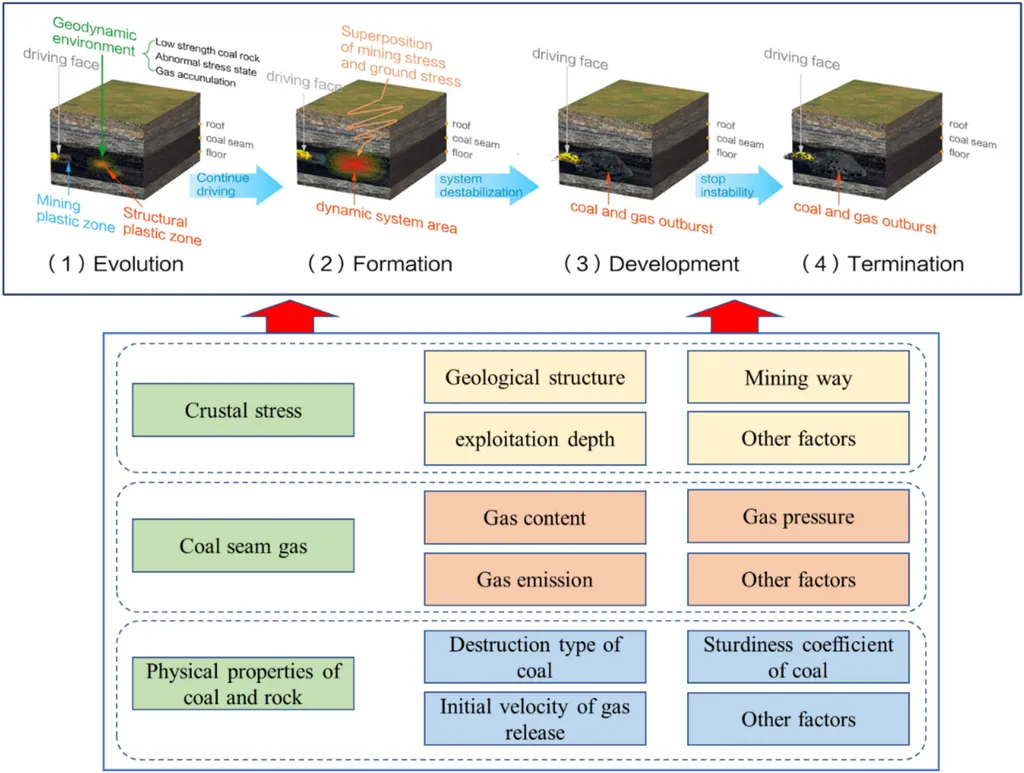In the heart of China’s capital, researchers at the China University of Mining and Technology-Beijing are tackling one of the most pressing challenges in the coal mining industry: predicting coal and gas outbursts. Led by Dr. Du Feng from the Key Laboratory for Precise Mining of Intergrown Energy and Resources, a groundbreaking study has been published in the Journal of Mining Science (矿业科学学报), offering a new approach to enhance safety and efficiency in deep coal mining.
Coal and gas outbursts are sudden and violent eruptions of coal and gas from the coal seam, posing significant threats to miners’ safety and operational productivity. As mining depths increase, so do the risks, making accurate prediction more crucial than ever. Dr. Du Feng and his team have developed a deep-learning-based predictive model that promises to revolutionize outburst risk assessment.
The team’s innovative approach begins with meticulous data preprocessing. “We used the Local Outlier Factor (LOF) and Multiple Imputation by Chained Equations (MICE) to clean and complete our dataset,” explains Dr. Du Feng. This ensures the data’s integrity and reliability, which is paramount for accurate predictions. The researchers then employed Kendall’s rank correlation coefficient to identify the most relevant predictive indicators, focusing on factors strongly correlated with outburst risks.
At the core of this study is a convolutional neural network (CNN) architecture, a type of deep learning algorithm particularly well-suited for processing complex data. To optimize the CNN’s performance, the team developed an enhanced dung beetle optimization algorithm (MSADBO). This algorithm incorporates several improvements, including an adaptive Gaussian-Cauchy hybrid mutation and a Bernoulli chaotic-map strategy, enhancing both global and local search capabilities and increasing population diversity.
The results are impressive. The MSADBO-CNN model achieved an accuracy of 98.7% on the training set and 91.67% on both the validation and test sets. “This model not only attains the highest predictive precision but also exhibits superior robustness, generalization ability, and operational safety,” says Dr. Du Feng.
The commercial implications of this research are substantial. By accurately predicting coal and gas outbursts, mining operations can enhance safety measures, reduce downtime, and improve overall productivity. This is particularly relevant as the energy sector continues to rely on coal, despite the global shift towards renewable energy sources. The ability to mine more safely and efficiently can help bridge the gap during the transition to cleaner energy.
Looking ahead, this research could shape future developments in the field by integrating advanced machine learning techniques into mining operations. As Dr. Du Feng notes, “Our model can be further refined and adapted to different mining environments, potentially leading to a significant reduction in accidents and losses.”
The study, published in the Journal of Mining Science (矿业科学学报), translates to English as “Journal of Mining Science,” underscores the importance of interdisciplinary research in addressing complex industrial challenges. By combining data science, machine learning, and mining engineering, Dr. Du Feng and his team have made a significant stride towards safer and more efficient coal mining practices. As the energy sector evolves, such innovations will be crucial in balancing the need for energy security with the imperative of worker safety.

